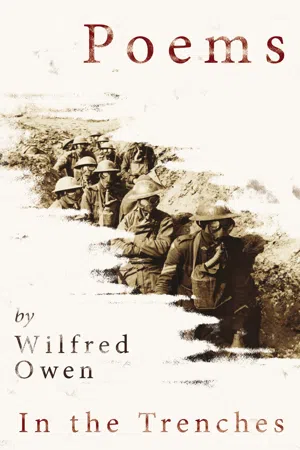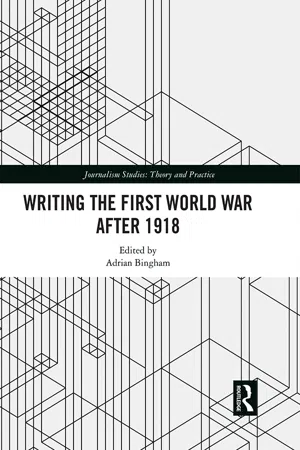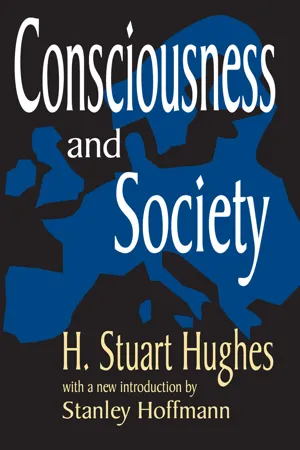First World War Fiction
First World War fiction refers to literary works, including novels and short stories, that are set during or inspired by the events of World War I. These works often explore the impact of the war on individuals and society, depicting the harsh realities of combat, the psychological effects on soldiers, and the broader social and political changes brought about by the war.
6 Key excerpts on "First World War Fiction"
- eBook - ePub
- Wilfred Owen(Author)
- 2020(Publication Date)
- Last Post Press(Publisher)
...World War One in Literature In 1939, the writer Robert Graves was asked to write an article for the BBC's Listener magazine, explaining 'as a war poet of the last war, why so little poetry has so far been produced by this one.' From the very first weeks of fighting the First World War inspired enormous amounts of poetry, factual analysis, autobiography and fiction - from all countries involved in the conflict. 2,225 English war poets have been counted, of whom 1808 were civilians. The 'total' nature of this war perhaps goes someway to explaining its enormous impact on the popular imagination. Even today, commemorations and the effects of a 'lost generation' are still being witnessed, it was a war fought for traditional, nationalistic values of the nineteenth century, propagated using twentieth century technological and industrial methods of killing. The literature written during, and inspired by the first world war provides extraordinary insight into how the common soldier experienced life in battle, as well as how the civilian population mobilised and dealt with t hese losses. A lot of the literature written during the war was designed to inform and propagandise, nowhere more evident than in writing for children. There were many overt attempts to encourage support for the war effort, influencing children's (future soldiers) attitudes towards armed conflict. An earlier example, encouraging children to be good citizens, fighting for king and country was Scouting for Boys, written by Lord Baden-Powell, the founder of the scouting movement (published 1908). The cover depicted a boy watching out for enemy ships on the shoreline, replacing traditional images of childish innocence, passivity and naivety with children ready, willing and able to serve their nation. These were activities full of excitement and adventure, including tracking, woodcraft, endurance, chivalry, saving lives and patriotism. Such tropes were eagerly expanded once the war had began, notably by A.R...
- eBook - ePub
English Literature
A Student Guide
- Martin Stephen(Author)
- 2013(Publication Date)
- Routledge(Publisher)
...CHAPTER TWENTY War Literature This chapter differs from others presented in this book because based as it largely is around the First World War and other modern conflicts, it does not describe a literary period or school, but rather a time in history. The reason for making it the subject of a separate chapter is the increasing emphasis given at Advanced and degree level to works which trace their origin back either to the First World War, or other wars. These fall into a number of categories. Firstly, there is the work of the so-called ‘war poets’. Secondly, there is the work of the numerous novelists who based their novels on the First World War. Thirdly, there are the women poets whose writing was inspired by or based upon the same war. Fourthly, there is the work of populist poets writing in the First World War who are coming in for increasing critical attention after years of neglect. Fifthly, there are the dramatists whose writing was based on the war. Sixthly, there are the modern or contemporary novelists who have used the war as their inspiration. Seventhly, and perhaps riding on the back of the popularity of the First World War authors, there has been increasing interest in the poetry of the Second World War. Eighthly, and largely beyond the scope of this book, there is the work of European writers in verse and prose with either the First or the Second World War as their subject. All this makes up a vast canon of writing and one which increasingly the student cannot ignore. The period is also interesting because it allows full expression to one of the healthiest developments to have been spawned in the United States and crossed over to Europe, namely the willingness to blur the lines between the traditional academic disciplines of English Literature and History, and even the newer ones of Sociology and Economics, and write about literature in its widest possible context, and not merely as lines upon a page...
- eBook - ePub
- Adrian Bingham, Adrian Bingham(Authors)
- 2018(Publication Date)
- Routledge(Publisher)
...Nowhere is this gap more obvious than in the literature on the First World War. The centenary of the “Great War” has prompted a wave of popular and scholarly debates about how the conflict should be commemorated and understood. One of the main strands of these debates is the way in which the war’s meaning has been powerfully and persistently shaped by the various cultural and historical representations created in its aftermath—both the poetry, novels, plays, films and memoirs produced by participants, and the later narratives, reconstructions and dramatisations written as the war faded into memory. If the literary, cinematic, televisual and historiographical depictions of the First World War have all been scrutinised in considerable detail, however, the role of journalists in describing and interpreting the conflict after 1918 has received relatively little attention. With the exception of a handful of prominent interventions—such as Will Dyson’s eerily prescient, and much reprinted, cartoon, “Peace and Future Cannon Fodder”, published in London’s Daily Herald in May 1919, and portraying a child representing the “1940 class” weeping at the terms of the recently agreed Versailles peace treaty—the contributions of the print media to the debates about the First World War have been treated as ephemeral and insignificant. This special issue seeks to redress the balance, demonstrating how print journalism in a range of participant nations, including Britain, France, Germany, Ireland, the United States and Australia, was a powerful and persistent influence on public attitudes to, and memories of, the unprecedented military carnage of 1914–1918. The articles are diverse in style and content, adopting a range of different methodologies and focusing on different types of text...
- eBook - ePub
- Jerome De Groot(Author)
- 2009(Publication Date)
- Routledge(Publisher)
...It is a clearly complex cultural entity of the sort described in the opening of this chapter, asking questions about historical translatability and the hegemonies of knowledge sustained by fiction about the past. The First World War is not part of the teleology of Britain but the moment of the Irish Rebellion. Barry, an Irish writer publishing with a British press (Faber & Faber), interrogates the historical myth that the war was a heroic sacrifice on the part of those who fought. He points out that most of those who were there had no desire to sacrifice themselves, and that they were simply tools of a declining imperial power. Willie and his regiment view the events in Dublin first-hand and his disquiet at seeing a new kind of ‘enemy’ communicates clearly the utter confusion of the time. Timmy Weekes, an Englishman in the trenches, introduces the soldiers to Dostoevsky. When asked how the Russian novelist would have dealt with the trenches, he says, ‘Dante is the chap for this … or Tolstoy.’ ‘Now, Tolstoy wrote about wars. But not like this war. In his war you could still go home and fall in love with a lady … Well, maybe it i'n't so very different. Maybe not. Anyway, they don't write books about the likes of us. It's officers and high-up people mostly’ (Barry 2006: 231–2). The novel explicitly takes the experience of the ordinary soldier in the trenches and shifts the focus of the historical novel. Furthermore, this section suggests that in the past wars and history in general have been considered in a romantic light, but that fictionalising will not be possible for the current conflict. Barry is concerned here to reflect upon the ways in which an event might be rewritten and recast after the event, the ways that stories are told that become myths...
- eBook - ePub
- H. Stuart Hughes, Stanley Hoffman(Authors)
- 2017(Publication Date)
- Routledge(Publisher)
...Chapter 9 The European Imagination and the First World War In the present chapter and the one following, the discussion will shift to a slightly different plane. We shall still be on the "higher" rather than the "lower" level of intellectual history. But we shall be dealing with figures who were closer to the popular world of discourse than were the giants of the generation of the 1890's—slightly younger men in nearly every case, essayists or imaginative writers whose rhythms of thought accorded better with the temper of the general educated public than did the austere lucubrations of the philosophers and social scientists whom we have been considering up to now. We shall be tracing one of the fashions in which the diffusion of the older men's ideas started. The less rigorous writers of a half generation younger than the great intellectual innovators—who, however, still thought of themselves as direct participants in the decisive experience of their elders—served as an initial line of transmission to the true popularizers of the generation following. Meantime these younger writers were themselves the senior members of the new age group that was coming to maturity in the early twentieth century. In this capacity, they acted as connecting links with a generation that in many respects was in radical contrast with the generation that has up to now occupied our attention. Born in the 1870's, men like Peguy and Hesse, Proust and Mann, could mediate between their elders who had been born in the late 1850's or the 1860's and their immediate juniors, born in the 1880's, who were just reaching manhood in the first decade of the twentieth century. This new generation has yet to be described. It falls outside the sphere of our study, consisting as it does of those whose major period of productivity came after the First World War and, in a number of cases, still continues today...
- eBook - ePub
Samuel Beckett and the Second World War
Politics, Propaganda and a 'Universe Become Provisional'
- William Davies(Author)
- 2020(Publication Date)
- Bloomsbury Academic(Publisher)
...Several common traits unite this genre, some of which we might now classify as modernist in style. Many of the war books of the period deployed fragmentary narratives, representative of the disorientating effects of war on time and space, as seen in Richard Aldington’s Death of a Hero (1929) – the first major study of which was written by MacGreevy in 1931. Many also feature the rejection of ‘old world’ ideologies and a move towards pacifism, famously articulated in Robert Graves’s Good-bye to All That (1929). The genre is united by visceral, experiential descriptions often focused on the physical body, as most notably found in Erich Maria Remarque’s All Quiet on the Western Front (1929), as well as the French war books Beckett praised to MacGreevy, what he called the ‘shell-shocked triangle’ of Vie des martyrs (1917) by Georges Duhamel, Le Feu (1916) by Henri Barbusse and Les Croix de bois (1919) by Roland Dorgelès; Beckett called the three novels some of the best ‘modernly’ books he ever read (LSB I : 32). The use of the body in the poetry of the English trench poets – Owen, Rosenberg, Sassoon, among others – are also important touchstones, and Patricia Rae argues that George Orwell’s writing on the Spanish Civil War carried forward the ‘war books’ tradition beyond the late 1920s during a period in which the genre suffered significant backlash (2009 : 246). The physical realities of combatant bodies are central to the war books’ cultural and social impact as a literary response to warfare, raising uncomfortable questions about duty, commitment and even the politics of criticism. The popularity of the war books and the subsequent hostility they prompted are worth reflecting on when considering Mercier and Camier in this context...





